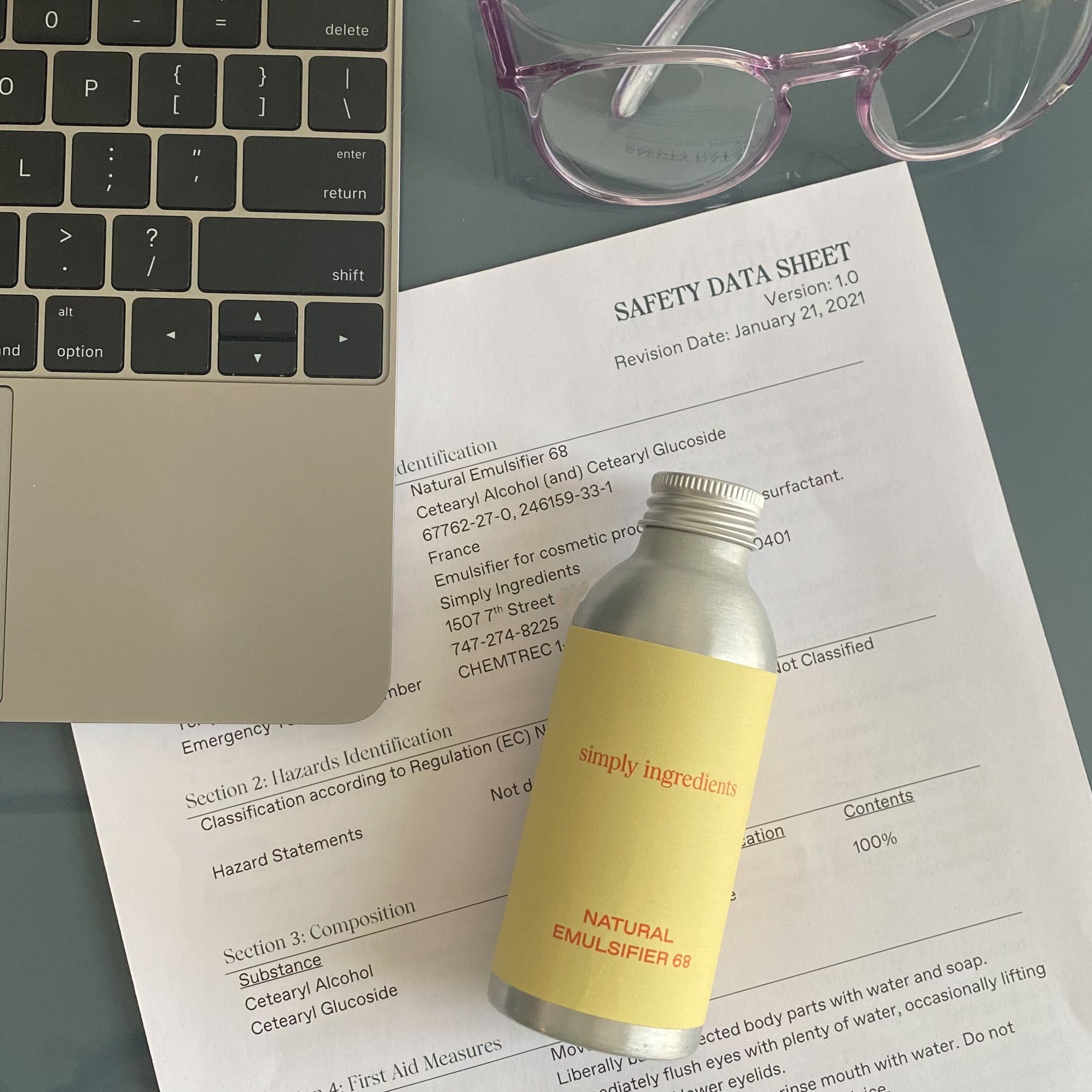A Safety Data Sheet (SDS) is the single most important document anyone should have about an ingredient. An SDS is a globally harmonized way of communicating any information about the hazards a material has - how it should be stored, how to protect yourself from it, what chemical properties the material has - and more.
We encourage you to follow along to this post with an SDS from our website, like Organic Glycerin. After reading, practice your knowledge with SDS's for Creamy Coconut Surfactant and Watermelon Seed Oil.
The 16 Sections
Every chemical supplier follows a format that organizes an SDS into 16 sections. Having the same 16 sections allows anyone to easily find the information they are looking for relating to toxicity, flammability and storage of an ingredient. The 16 sections of an SDS for an ingredient are:
- Identification of the ingredient and supplier
- Identification of any hazards the product may have
- Composition of the product (only hazardous materials are required to be listed, but Simply Ingredients lists the full composition here)
- First Aid measures upon exposure to skin, eyes, ingestion or inhalation
- Firefighting information
- Clean up measures for accidental release into environment
- Handing and storage of the ingredient
- Personal protective equipment to keep yourself safe while working with the ingredient
- Physical and chemical properties, so the material can be identified
- Stability and reactivity of the ingredient, including conditions to avoid
- Toxicological information based on industry knowledge
- Ecological toxicity and how this ingredient interacts with the environment
- Disposal considerations for safely disposing of the ingredient
- Information on transporting the ingredient by shipment
- Regulatory information about the ingredient
- Other information not included above
How do I use this information?
When purchasing an ingredient, it’s important to download the SDS and keep it on file in your home. In the case of an emergency, you will need to access it very quickly. Familiarize yourself with the ingredient, starting section by section. Review any hazards, appropriate first aid measures, clean up instructions, storage, and personal protective equipment needed.
It is not recommended to use the SDS as a tool to help you formulate because the specifications in Section 9 are generally for how to identify and handle the material. Not all suppliers disclose information necessary to help you formulate in an SDS. While we at Simply Ingredients do list a full composition of each ingredient in Section 3, not all suppliers do that. It is only required to list hazardous components that require extra care from a safety perspective. There is a lot more information needed when formulating that can be found in the Specifications Table for every ingredient.
Who needs an SDS?
An SDS is for everyone! Safety should be first and foremost, whether you’re working at a brand as a chemist or formulating in your home lab. Keep in mind an SDS contains information that is written for both individuals working with small or large amounts of an ingredient, for example -
- people who make the ingredients that are consistently exposed to large quantities
- people in product manufacturing that are exposed to larger-than-lab quantities, like drums or pails or bulk tankers
- chemists or home crafters using small quantities in a lab or at home
Where do I find an SDS?
Simply Ingredients provides an SDS available for viewing, downloading or printing for every product. It can be found at the bottom of every Specification Table on each product page under Regulatory Documents. We also include a printed SDS for all products containing hazards if you have purchased them from our website.
What do I do in the event of an emergency?
First, call your appropriate emergency service, like 911. Every SDS has the chemical identification number, called a CAS # at the top. This identifies the chemical or chemical mixture. There is also a toll free number to call at the top for non-emergent situations regarding chemical exposure. Simply Ingredients uses a third-party company for this service that’s available 24 hours a day, called CHEMTREC.
This information was adapted from an article Valerie originally wrote for Chemists Corner.
